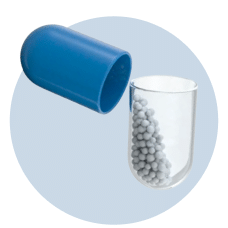- Sexual Wellness
- Condoms
- Lubricants & Massage Gels
- Personal body massagers
- Men Performance Enhancers
- Sexual Health Supplements
- Skin Care
- Mosquito Repellents
- Acne Care
- Bath Essentials
- Facewash
- Sanitizers & Handwash
- Sunscreen Products
- Baby Care
- Baby & Infant Food
- Baby Diapers, wipes & more
- Nursing & Feeding
- Baby Bath Essentials
- Baby Skin Care
- Baby Healthcare
- Baby Oral Health
- Hair Care
- Shampoo
- Hair Conditioners
- Hair Growth Supplements
- Hair Oils
- Hair Growth for Men
- Vitamins & Supplements
- Multivitamins
- Mineral Supplements
- Vitamins A-Z
- banner
- Nutritional Drinks
- Adult Daily Nutrition
- Kids Nutrition (2-15 Yrs)
- For Women
- Health Food & Drinks
- Green Tea & Herbal Tea
- Herbal Juice
- Apple Cider Vinegar
- Healthy Snacks
- Masks (N95, Surgical and more)
- Face Shield
- Surgical Masks
- N95 Masks
- N99 Masks
- BP Monitors
- Nebulizers & Vaporizers
- Oximeters & Pedometers
- Vital Signs Monitors & Wearables
- Oxygen Concentrators & Cans
- Weighing Scales
- Thermometers
- IR Thermometers
- Body Massager
- Diabetes Monitors
- Mobility Equipments
- Exercise Equipments
- Doctor's Corner
- Stethoscopes
- Tapes & Bandages
- Clinical Diagnostic Equipments
- Dressings & Wound Care
- Supports & Braces
- Neck & Shoulder Support
- Knee & Leg Support
- Back & Abdomen Support
- Ankle & Foot Support
- Hand & Wrist Braces
- Arm & Elbow Support
- Cervical Pillows
- Compression support & sleeves
- Heel support
- Ayurveda Top Brands
- Dabur
- Sri Sri Tattva
- Baidyanath Products
- Kerala Ayurveda
- Jiva Ayurveda
- Zandu
- Tata 1mg Herbal Supplements
- Patanjali
- Herbs
- Turmeric
- Ashwagandha (Immunity & Stress)
- Garcinia Cambogia (Weight Loss)
- Arjuna (Cardiac Wellness)
- Shilajit (Men Sexual Wellness)
- Ginseng (Improves Cognition)
- Milk Thistle (Liver Care)
- Musli (Vitality & Sexual Wellness)
- Saw Palmetto (Prostate Health)
- Evening Primrose
Ketovax 2% Cream
Product introduction
Ketovax 2% Cream belongs to a group of medicines called antifungals. It is used to treat fungal infections of the skin. It works by killing the fungus that causes infections such as athlete’s foot, thrush and ringworm.
Ketovax 2% Cream is used in treating various fungus infections
Ketovax 2% Cream is used in treating various fungus infections
Uses of Ketovax Cream
Benefits of Ketovax Cream
In Fungal skin infections
Ketovax 2% Cream is an antifungal medicine. It is used to treat skin infections caused by fungi. These include athlete’s foot, ringworm, vaginal thrush, and sweat rash. It works by killing and stopping the growth of fungi, thereby clearing the infection and relieving the symptoms. You should use this medicine for as long as it is prescribed, even if your symptoms disappear, otherwise they may come back. Depending on the type of infection you are treating, this may be several weeks. Even after your skin is completely cured, you may have to apply the cream occasionally to prevent the symptoms from returning.
Side effects of Ketovax Cream
Most side effects do not require any medical attention and disappear as your body adjusts to the medicine. Consult your doctor if they persist or if you’re worried about them
Common side effects of Ketovax
- Skin peeling
- Application site reactions (burning, irritation, itching and redness)
- Nausea
- Vomiting
- Abdominal pain
- Increased liver enzymes
- Application site redness
- Itching
- Diarrhea
- Abnormal liver function tests
- Adrenal insufficiency
- Application site burning
How to use Ketovax Cream
This medicine is for external use only. Use it in the dose and duration as advised by your doctor. Check the label for directions before use. Clean and dry the affected area and apply the cream. Wash your hands after applying, unless hands are the affected area.
Safety advice
Alcohol
No interaction found/established
Pregnancy
CONSULT YOUR DOCTOR
Ketovax 2% Cream may be unsafe to use during pregnancy. Although there are limited studies in humans, animal studies have shown harmful effects on the developing baby. Your doctor will weigh the benefits and any potential risks before prescribing it to you. Please consult your doctor.
Breast feeding
SAFE IF PRESCRIBED
Ketovax 2% Cream is safe to use during breastfeeding. Human studies suggest that the drug does not pass into the breastmilk in a significant amount and is not harmful to the baby.
Driving
No interaction found/established
Kidney
No interaction found/established
Liver
No interaction found/established
What if you forget to take Ketovax Cream?
If you miss a dose of Ketovax 2% Cream, apply it as soon as possible. However, if it is almost time for your next dose, skip the missed dose and go back to your regular schedule. Do not double the dose.
All substitutes
For informational purposes only. Consult a doctor before taking any medicines.
Ketovax 2% Cream
₹2.63/gm of Cream
Keto Cream
Med Manor Organics Pvt Ltd
₹3.27/gm of cream
24% costlier
KZ Cream
Hegde and Hegde Pharmaceutical LLP
₹3.83/gm of cream
46% costlier
Nizral Cream
Janssen Pharmaceuticals
₹5.47/gm of cream
108% costlier
Kenozole Cream
Brinton Pharmaceuticals Pvt Ltd
₹2.62/gm of cream
same price
Forfora Cream
Encore Pharmaceuticals Inc.
₹2.92/gm of cream
11% costlier
Quick tips
- Ketovax 2% Cream helps treat skin infections caused by many different types of fungi.
- Few healthy tips for Athlete's Foot:
- Keep your feet clean and dry, particularly between the toes.
- Cut your nails short and prefer open-toe shoes for everyday use.
- Use a separate clean towel for the feet and wear clean cotton socks.
- Never share your socks, shoes, and towel with others.
- Finish the full course of treatment even if you feel better.
- Avoid getting it in the eyes, nose, or mouth. If accidental exposure occurs, rinse immediately with plenty of water.
- Inform your doctor if the infection has not cleared up after 4 weeks of treatment.
- Inform your doctor if you are pregnant, planning pregnancy or breastfeeding.
Fact Box
Chemical Class
Azole derivatives {Imidazoles}
Habit Forming
No
Therapeutic Class
DERMA
Action Class
Fungal ergosterol synthesis inhibitor
FAQs
What is Ketovax 2% Cream used for?
Ketovax 2% Cream is used to treat skin infections which may appear on the feet (Athlete’s foot), in the groin area (jock itch), or between skin folds (sweat rash infected with a yeast infection “thrush”). It is also used for candida infections of skin and nails. It rapidly relieves the itching caused due to these fungal infections.
Is Ketovax 2% Cream a steroid cream?
No, Ketovax 2% Cream is not a steroid cream. It is an anti-fungal medicine which belongs to the imidazole class of medicines. It works by killing the fungi or by preventing the growth of fungi that cause infection.
What are the side effects of Ketovax 2% Cream?
The common side effects are application site burning, redness, and itching. The application site may also develop some uncommon side effects such as discomfort, dryness, bleeding, severe allergic reactions, urticaria or hives, rash, skin exfoliation, sticky skin, prickling sensation, or inflammation.
Can I use a steroid cream along with Ketovax 2% Cream?
It is recommended that you use a mild steroid ointment like hydrocortisone cream/ointment in the morning and use Ketovax 2% Cream in the evening. You can then stop using the steroid cream gradually over 2-3 weeks. But, if you have used a potent corticosteroid for seborrheic dermatitis, maintain at least a gap of 2 weeks before you apply Ketovax 2% Cream to prevent skin sensitization.
How should Ketovax 2% Cream be applied?
Wash the affected area thoroughly with water and then dry it. Wash your hands carefully (until and unless your hands are also affected) after applying Ketovax 2% Cream. This will prevent the infection from spreading to other parts of the body or other people.
For how long do I need to use Ketovax 2% Cream?
You should use Ketovax 2% Cream for as long as advised by your doctor. Generally, it is to be used for 2-4 weeks for jock itch and sweat rash and 2-6 weeks for Athlete’s foot. Do not stop using it even if your symptoms have disappeared because the infection may reappear if not properly treated.
What should I do if I forget to use Ketovax 2% Cream?
If you forget to use Ketovax 2% Cream, do not worry and continue using Ketovax 2% Cream as soon as you remember. However, if you are not sure and have any other doubts, please consult your doctor.
Disclaimer:
Tata 1mg's sole intention is to ensure that its consumers get information that is expert-reviewed, accurate and trustworthy. However, the information contained herein should NOT be used as a substitute for the advice of a qualified physician. The information provided here is for informational purposes only. This may not cover everything about particular health conditions, lab tests, medicines, all possible side effects, drug interactions, warnings, alerts, etc. Please consult your doctor and discuss all your queries related to any disease or medicine. We intend to support, not replace, the doctor-patient relationship.References
- Schimmer BP, Funder JW. ACTH, Adrenal Steroids, and Pharmacology of the Adrenal Cortex. In: Brunton LL, Chabner BA, Knollmann BC, editors. Goodman & Gilman’s: The Pharmacological Basis of Therapeutics. 12th ed. New York, New York: McGraw-Hill Medical; 2011. p. 1233.
- Bennett JE. Antifungal Agents. In: Brunton LL, Chabner BA, Knollmann BC, editors. Goodman & Gilman’s: The Pharmacological Basis of Therapeutics. New York, New York: McGraw-Hill Medical; 2011. p. 1576.
- Chrousos GP. Adrenocorticosteroids & Adrenocortical Antagonists. In: Katzung BG, Masters SB, Trevor AJ, editors. Basic and Clinical Pharmacology. 11th ed. New Delhi, India: Tata McGraw Hill Education Private Limited; 2009. p. 693.
- Briggs GG, Freeman RK, editors. A Reference Guide to Fetal and Neonatal Risk: Drugs in Pregnancy and Lactation. 10th ed. Philadelphia, PA: Wolters Kluwer Health; 2015. pp. 758-59.
Marketer details
Name: Pharvax Biosciences
Address: 34, Raipur Kalan,Chandigarh -160102
Country of origin: India
The list of available options shown with the same composition has been prepared upon the advice of registered medical practitioners, pharmacists affiliated with TATA 1MG. TATA 1MG does not promote any pharmaceutical product of any particular company, and all recommendations are based on the medical opinion, advisories from specialist medical and pharmaceutical professionals.
The list of available options shown with the same composition has been prepared upon the advice of registered medical practitioners, pharmacists affiliated with TATA 1MG. TATA 1MG does not promote any pharmaceutical product of any particular company, and all recommendations are based on the medical opinion, advisories from specialist medical and pharmaceutical professionals.
Lab tests offered by us

Related/Popular tests
₹39.5
Inclusive of all taxes
MRP₹79 50% OFF
15.0 gm in 1 tube
SOLD OUT
Available options
Available options
Same salt composition:Ketoconazole (2% w/w)

Same salt composition

Verified by doctors

Popularly bought

Trusted quality
Why buy these from 1mg?






